The New Motorola Moto X (2nd Gen) Review
by Joshua Ho on September 17, 2014 9:00 AM EST- Posted in
- Smartphones
- Motorola
- Android
- Mobile
Software
By now, most people are probably familiar with Motorola’s new strategy. Instead of focusing upon differentiating their user interface with a visual redesign and custom applications to replace almost every function, Motorola has stuck with the UI that we see in Nexus devices and any build on Android Open Source Project (AOSP). Instead, Motorola is focusing upon adding value with applications that add functionality and don’t really deviate from the established design language. Motorola claims that this improves performance and also the rate at which they update their phones. While the former is definitely true when comparing to some of the heavier UIs, it’s not necessarily true with all OEM skins. The latter seems to be true all of the time though, as so far with this strategy Motorola has been one of the first to release new Android OS updates.
Of course, we need to go over the value additions that Motorola has made to the software. There are a few key applications that we see in the new Moto X, namely Connect, Motorola Migrate, and Moto Assist. There’s also Spotlight, but that application is more about fun and some interactive stories. The other application that only needs a sentence to explain is the equalizer, which works for both the speaker and headphone jack. In the interest of not wasting everyone’s time, we’ll talk about Connect first. While one aspect of it is to control the Moto 360 and Power Pack Micro, the differentiating aspect is to act as a way to send and receive text messages through the computer. In addition, this application allows for a computer to remotely ring the connected Moto X and also track call logs.
While these features are nothing new and can be found in the form of Airdroid on the Play Store, the difference is the polish that this feature has. The interface is clean and fast, and feels like a native application. It just works, which is surprisingly rare with some of the features that I see on smartphones. It works through WiFi and cellular data, and is tied to a Motorola or Google account, so the initial setup is the only area that takes any amount of time.
Motorola Migrate is decidedly more mundane, and is simply a solid way to transfer data from another smartphone running iOS or Android to the new Moto X. Interestingly enough, it also provides a method for transferring information from the Moto X to another phone. While I don’t really have any need for such an application, it would definitely be great for anyone new to Android as it would be an easy solution.
Moto Assist rounds out the Moto app suite and provides great functionality, although Moto Assist requires high accuracy location to be on all the time to function properly. By using data such as time, calendar events, and location, Moto Assist will change settings on the phone. For example, by default the phone will automatically be silenced and Moto Display will be turned off between 11 PM and 6 AM. If the phone detects that you are driving, it will start playing music over Bluetooth or the headphone jack and read text message aloud. It also will announce the caller ID for incoming calls. The final two profiles are home and meeting, and the former is simply the driving profile without music options and the latter is the sleep profile with auto-reply instead of shutting down Moto Display.
Needless to say, it’s a convenient feature. However, I have to question the wisdom of using GPS data as it would require a great deal of monitoring in order to work reliably, which would hurt battery life. At any rate, these features work as advertised.
Overall, I think Motorola has added some decent software features, but most of their differentiation comes from the integration of software and hardware. While Motorola has set themselves apart from the other OEMs by not skinning Android at all, they face direct comparison to the Google’s Nexus line as the experience is so similar. While stock Android is great in some ways, I also personally feel that it’s a bit user unfriendly as some functionality just doesn’t work as expected. The quick settings drawer is a great example of this, as some buttons will toggle on long press and others will toggle on a short press. The contrast of both dark and light themed applications is irritating as well, although Android L will go a long way to fix all of these complaints.
At any rate, most of these issues are nitpicking. Anyone that actually buys this phone will find a great software experience. While OEM UIs have the potential to add to the Android experience, for the most part the major reskins tend to detract from the experience rather than adding to it. Motorola has done a great job by adding to it, even if they don’t add as much as I’d like. I really do hope that the launch day OTA fixes a lot of the issues I've encountered, as there's noticeable levels of general bugginess.


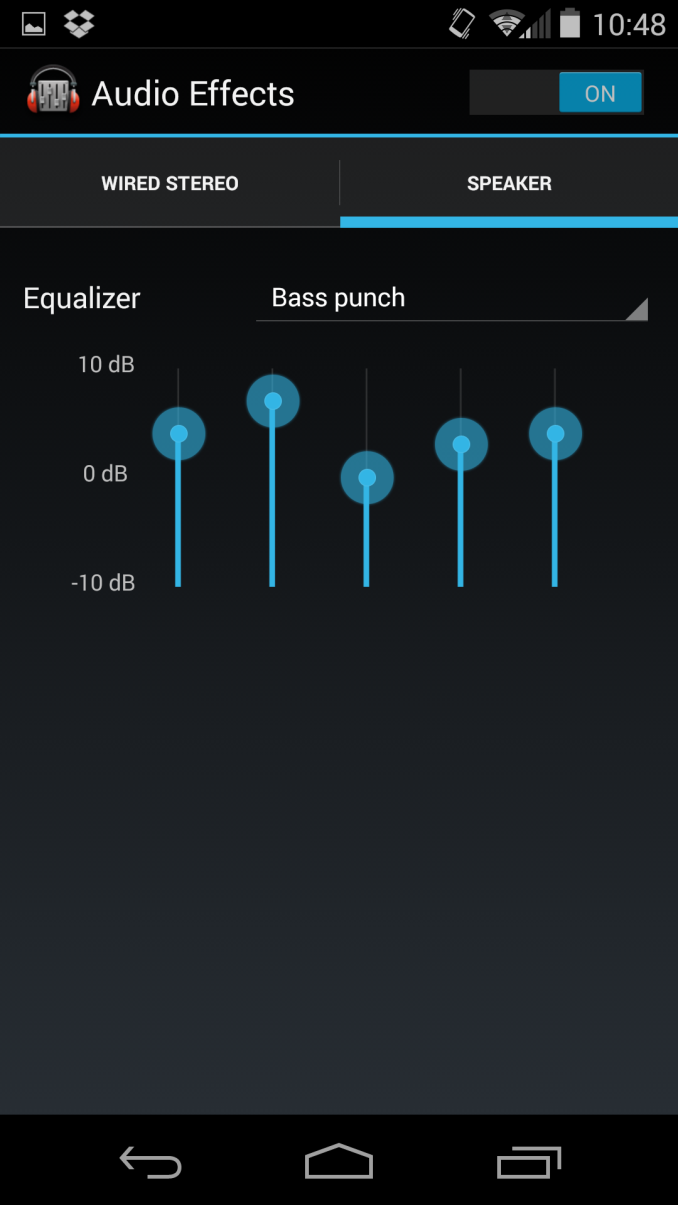
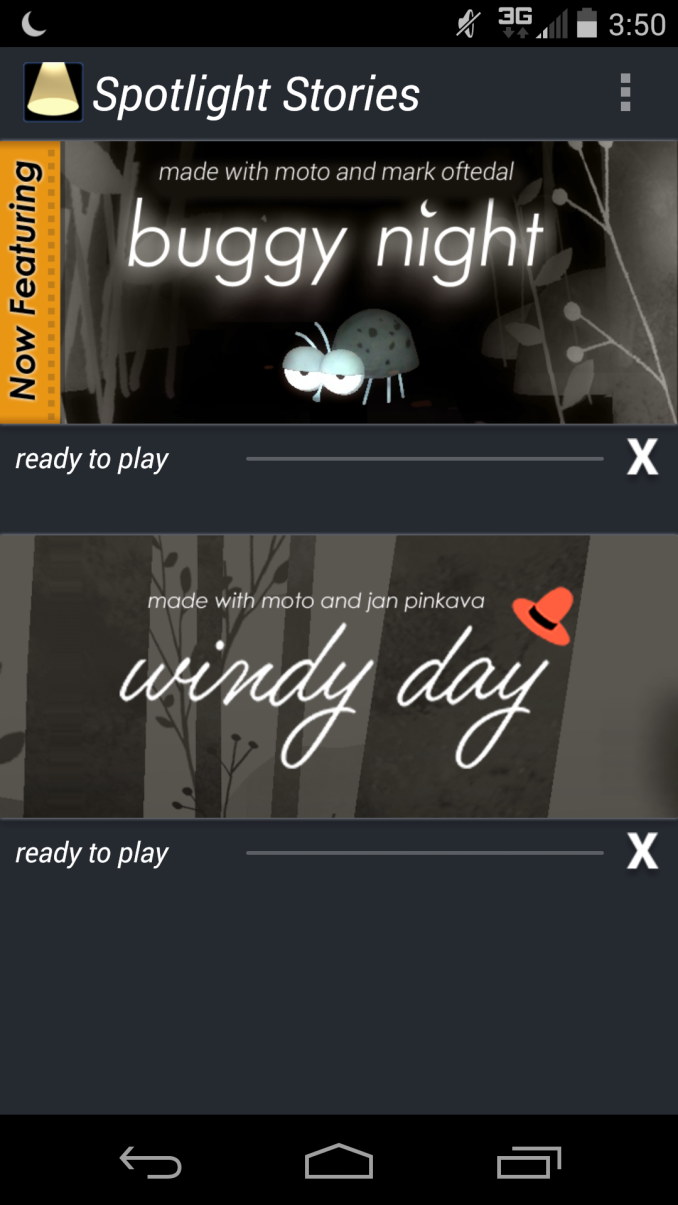
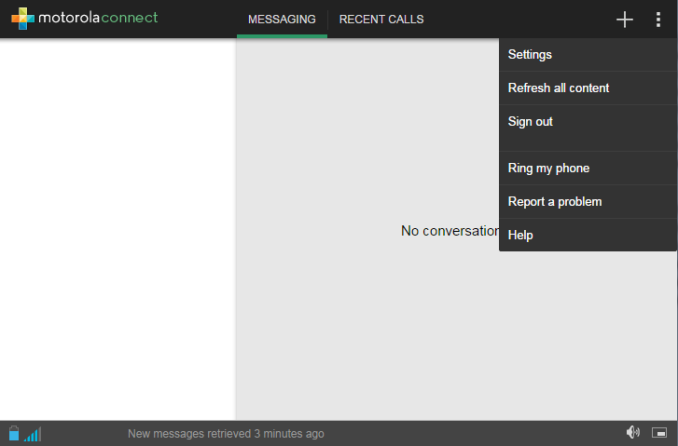
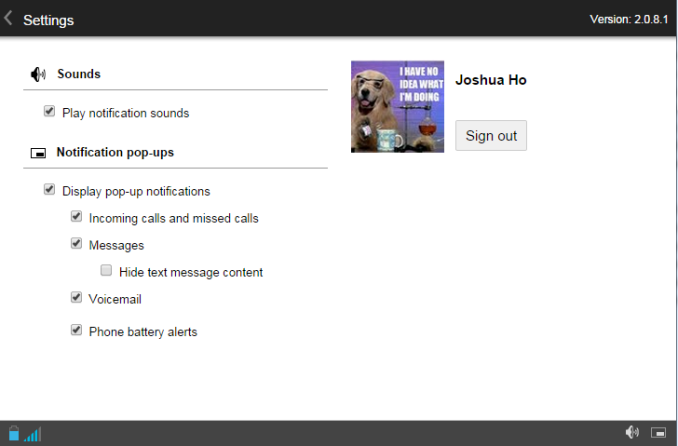
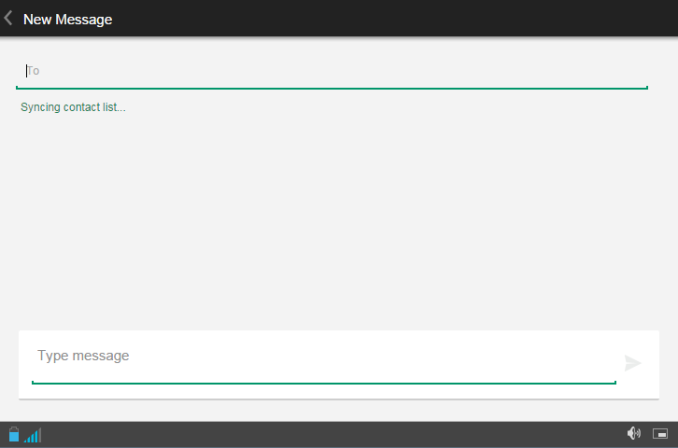
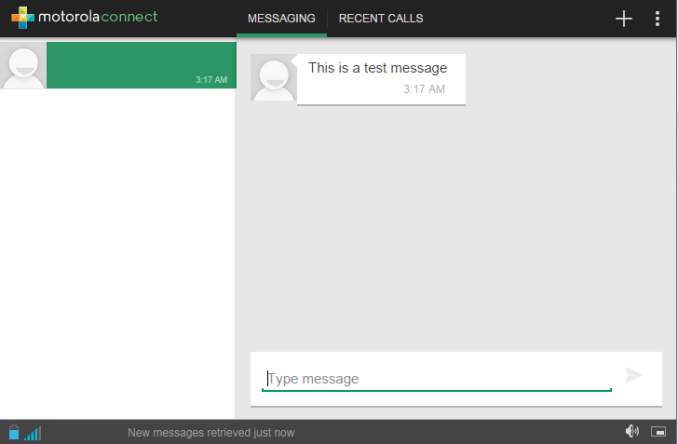
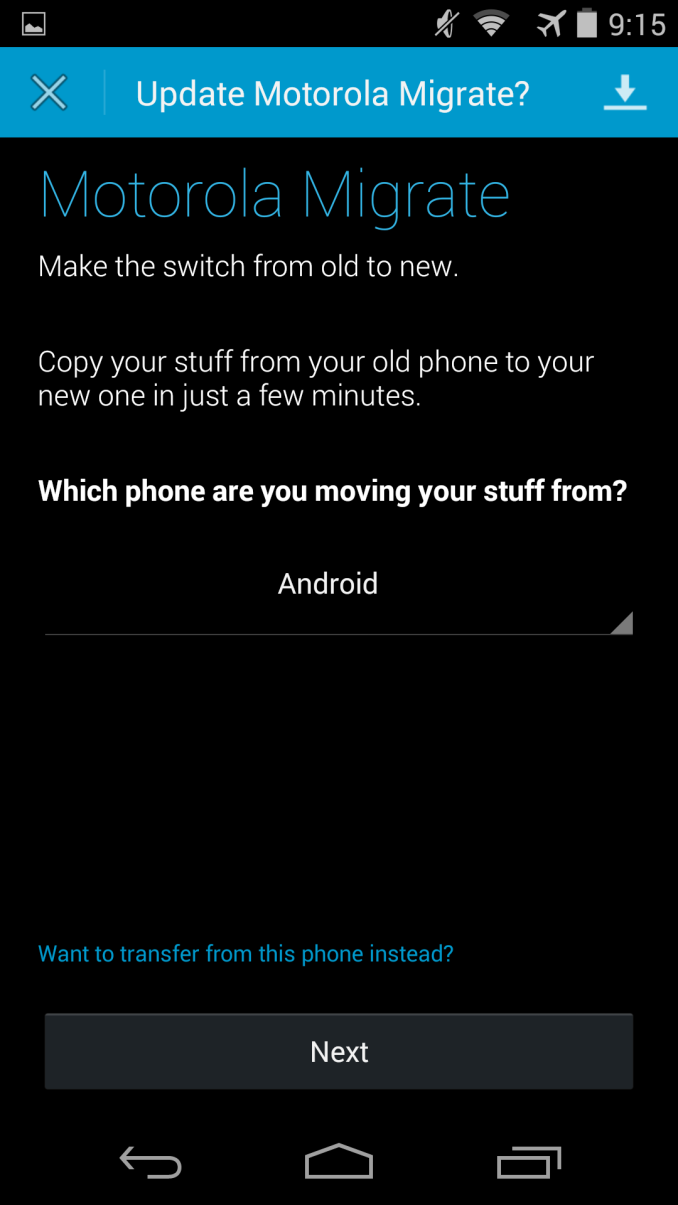
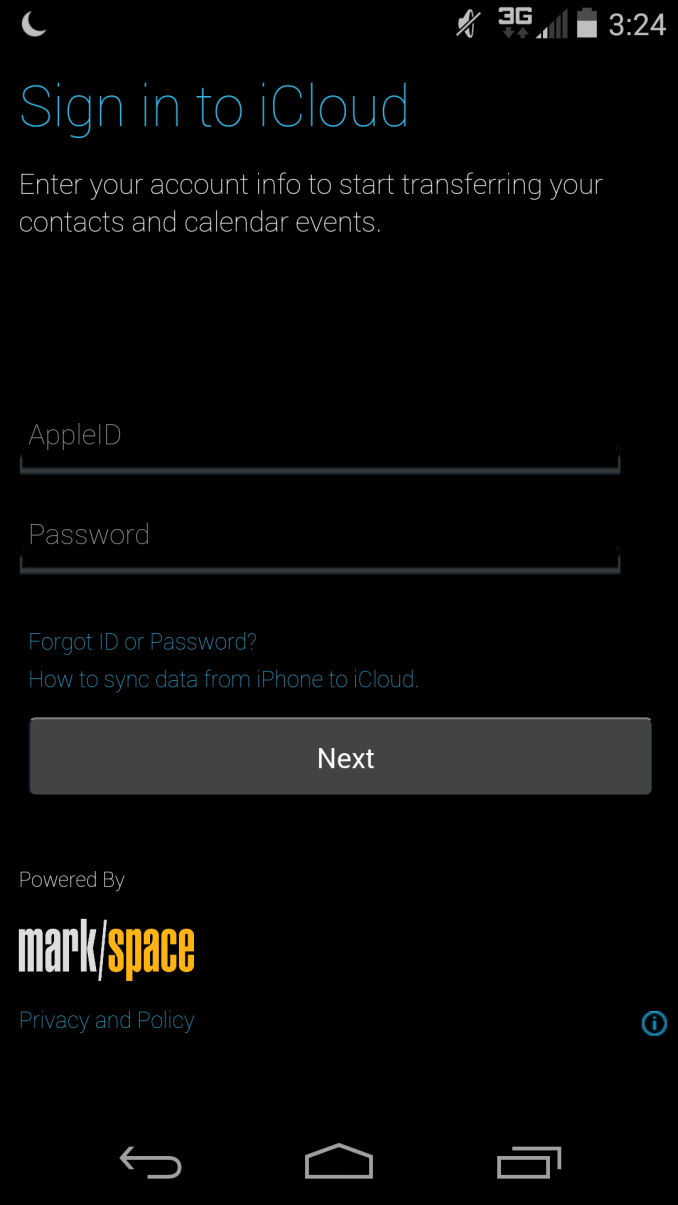
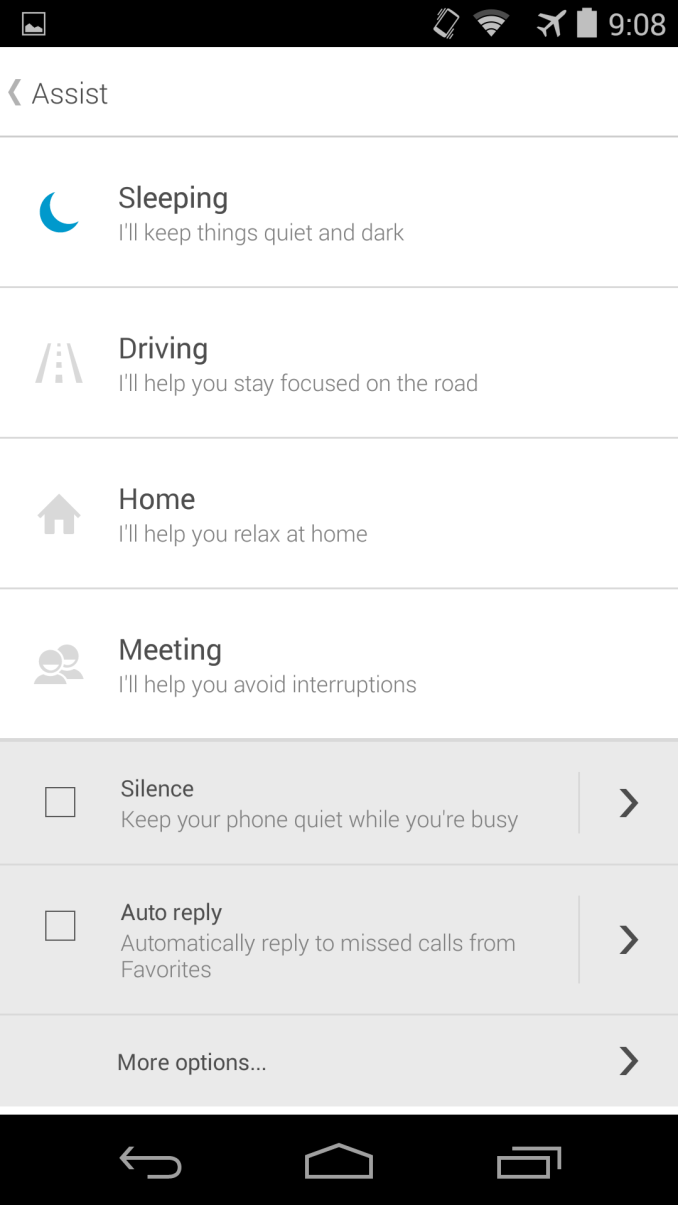
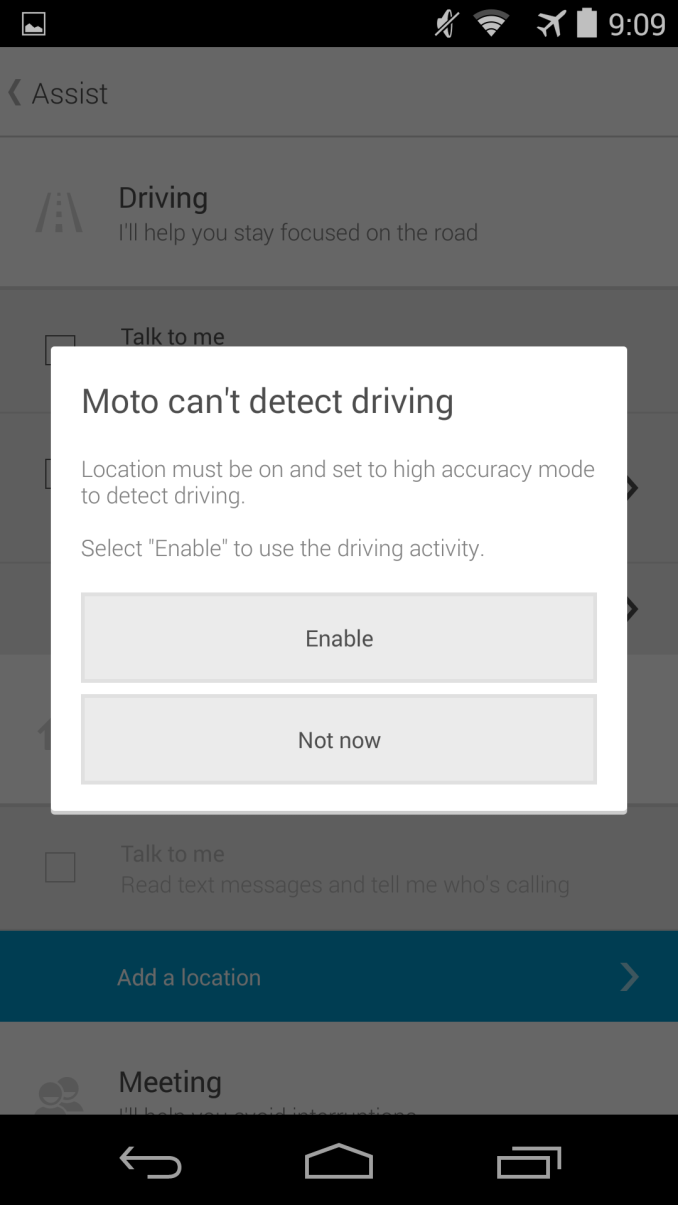
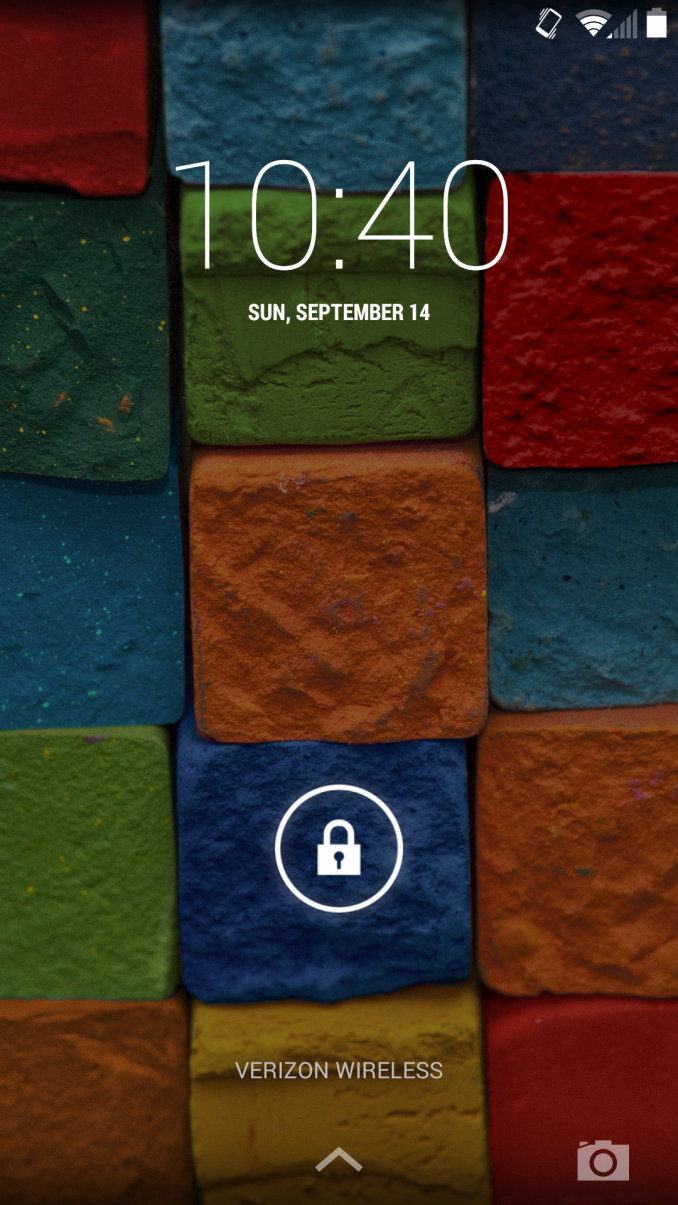
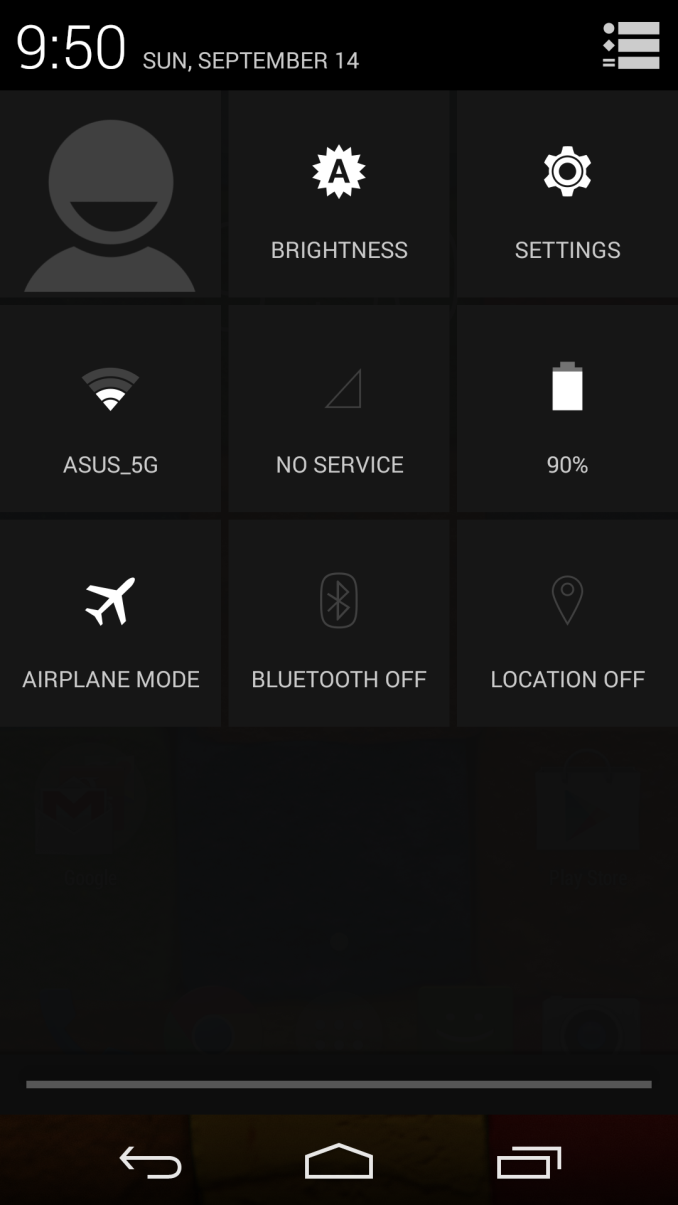








179 Comments
View All Comments
Endda - Wednesday, September 17, 2014 - link
and the Sony Xperia Z3 CompactNBMTX - Thursday, September 18, 2014 - link
The Z1f outsold the iPhone in Japan and it's seemingly only getting more premium AND more durable at the same time with the Z3c... though I like the Z1f/c's sides a bit more than the Z3c's.piroroadkill - Wednesday, September 17, 2014 - link
Alpha is a PoS compared with Z3 Compact.NBMTX - Thursday, September 18, 2014 - link
+1,000,000I would have really liked Moto to have gone head to head with the new iPhone staying at [a more compact] 4.7" with a much better sRGB calibrated display, a tested and quality 8mp camera with ois, a decent headphone amp (more important than stereo speakers, imo) with at least decent headphones, an included turbo charger, and something amazing like shell cordovan leather (vs delicate current options) that would [theoretically] only get better with the level of use our phones get...I think with small changes like that, it could have easily unseated the iP6 as a "premium device with attention to detail"...
wffurr - Wednesday, September 17, 2014 - link
I was pretty disappointed to see the new Moto X go to the larger screen size. I think Apple nailed it with different devices at 4.7" and 5.5". I wish Moto had kept the X at 4.7" and just upgraded the internals, maybe done the metal band thing, and introduced a new larger phone as a separate model.Maybe they don't have the internal resources to do two models, so they had to compromise and release a phone that's too big for one hand but not big enough to compete with the Note or iPhone 6+. That seems like a really poor choice to me, if so.
NBMTX - Thursday, September 18, 2014 - link
I'm with you but my guess is they simply settled on making it directly in between both sides of the argument... which makes sense. I guess.Also, Apple's 4.7" is fairly different than Moto's 4.7", if it's Nexus 5 like dimensions (but thin, with rounded edges) are anything to go by. Moto's was perfect, IMO. I'm glad the curvature is seemingly here to stay.
fokka - Wednesday, September 17, 2014 - link
wonderfully put. also, if they wanted to be part of the 5-inch crowd so bad, why not just make it 5 inches? why go for 5.2?they should just have stayed at 4.7", that was a big part of what made the x stand out in the first place. a more efficient SoC, bigger battery, better camera and maybe, just maybe, even an sd slot and they would've been good for another year.
but as nice as the new x looks, now we have yet another phablet sized phone with mediocre runtime and mediocre camera.
soccerballtux - Thursday, September 18, 2014 - link
having the Nexus 5, I think it's just a bit too small, but every 5.2" phone I use, I feel is perfect. 5.5" too big, but not 5.2.kasakka - Wednesday, September 17, 2014 - link
Agreed. It's not a coincidence that Apple went with 4.7" for the iPhone 6. It's probably the perfect display size for a smartphone at the moment, provided the bezels are very slim. As an owner of the Galaxy S4, I feel it is just a tiny bit too big to hold and use comfortably with one hand.I truly hope the trend swings around soon and manufacturers realise that there is a good market for slightly smaller, high performance phones. In Japan I had the pleasure of trying the Sharp Aquos XX Mini (4.5") and it was pretty amazing (battery life at such a small size w/ 1080p screen is questionable though) and would've bought it if it had had support for 3G/LTE in my country.
soccerballtux - Thursday, September 18, 2014 - link
I am not the only one that thinks 5.2" is the sweet spot and wishes my Nexus 5 had a 5.2" screen.